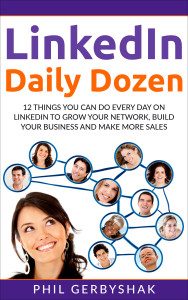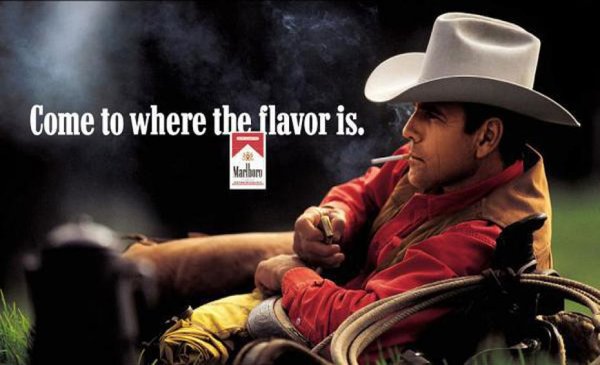Liberty Public Market is one of the newest entries in a growing food retailing trend — the rise of public markets and food halls. This video explains why these venues are so popular and gives you a brief tour of Liberty Public Market in San Diego.
DLYohn Brand Experience: Brief Liberty Public Market from Denise Lee Yohn on Vimeo.
other brand experience briefs:
Starbucks Reserve Roastery & Tasting Room San Diego Public Library Downtown Project
transcript:
Today’s Brand Experience Brief covers a new entry in a growing trend — the rise of public markets and food halls. I’ll take you inside one of the newest, Liberty Public Market in San Diego — but first let’s set the stage by examining the popularity behind venues like it.
Public markets and food halls are like fancy food courts that are sometimes part of a larger shopping center or entertainment district. They often feature gourmet food sold to be eaten on premise in communal seating areas as well as meals and groceries to be purchased to-go. They are usually comprised of artisanal non-chain vendors and restaurateurs with a focus on local ingredients, local tastes, and local business owners. Although food halls have existed in Britain for many years (perhaps one of the most famous of which is in in the iconic Harrod’s department store), they started in the US in 2010, when the first American Eataly opened in New York City. Then came similar concepts in Chicago, San Francisco, and Portland, and now public markets and food halls have been popping up in almost every major market.
Their popularity has arisen from the intersection of several trends:
First, Americans’ interest in food and culinary has been growing over the last decade — people don’t just want to eat a meal, they want to savor every aspect of their food. A related trend is how grocery shopping has evolved — many people no longer simply visit one giant big-box store. They’ve gone back the future and are more likely visit multiple specialized shops like a butcher, bakery, farmer’s market for produce, etc. Which also relates to the growing popularity of community-based agriculture and locally- sourced food and ingredients. People are also more interested the experiences that surround their purchases and food halls and markets offer creativity and novelty. And entrepreneurs and aspiring restaurateurs are looking for lower-cost, lower-risk ways to start up food businesses.
This has created the perfect environment for public markets and food halls to thrive and Liberty Public Market in San Diego is no exception. Even though it’s only been open for a few short months and still needs to add tenants to round out its offerings and to improve the warmth and glamour of the environment, Liberty Public Market has been attracting a steady stream of locals and visitors and getting pretty good reviews.
Its strength is its appeal to a wide range of people and purchase occasions. Foodies enjoy shops like Baker & Olive, where you can sample and learn about infused olive oils. Folks looking for a convenient meal have plenty of choices including several ethnic options like empanadas and Thai cuisine. For shoppers, there’s a butcher, a florist, and several specialty retailers like a beer shop showcasing San Diego’s burgeoning craft beer business and an outpost of a local cheese store.
Like public markets in other towns, Liberty is anchored by a full-service restaurant called Mess Hall, in a nod to its location of a former Naval base — but the separation between restaurant and hall is unclear so I imagine some customers might become confused or frustrated.
There’s ample communal seating inside and outdoors and a nice feature are the windows in the halls lining the perimeter that give you a look into the back of the house of the shops. A huge digital screen displaying tweets and content from the merchants lends a progressive feel to one area, but the place needs to incorporate more art and design to make it feel less industrial and generic.
In general Liberty Public Market serves up an exciting, new food experience. Keep your eye on it and other food halls and public markets. They’re changing the face of food retailing.
The post brand experience brief: liberty public market, a new food hall appeared first on Denise Lee Yohn.

 Interestingly, most of the products are meant to ‘track’ things – from tracking your activities to tracking your pets. iPhone already tracks many things and Apple is known to have hired several medical and bio-sensor experts, such as O’Reilly’s chief medical officer Michael Masimo and Vital Connect’s vice president of biosensor technology Ravi Narasimhan, for its “special projects”. I am expecting some kick-ass fitness applications. But there are already so many tracking devices which inundate us with data. So what I am waiting to see is how Apple puts all the data together and make the iWatch tell new stories about us. Can iWatch go beyond the ‘quantified self’ hype and tell us things that really help improve the quality of our lives?
Interestingly, most of the products are meant to ‘track’ things – from tracking your activities to tracking your pets. iPhone already tracks many things and Apple is known to have hired several medical and bio-sensor experts, such as O’Reilly’s chief medical officer Michael Masimo and Vital Connect’s vice president of biosensor technology Ravi Narasimhan, for its “special projects”. I am expecting some kick-ass fitness applications. But there are already so many tracking devices which inundate us with data. So what I am waiting to see is how Apple puts all the data together and make the iWatch tell new stories about us. Can iWatch go beyond the ‘quantified self’ hype and tell us things that really help improve the quality of our lives?













